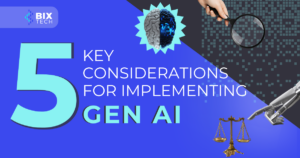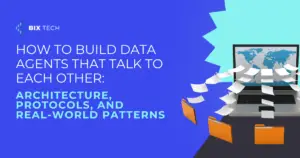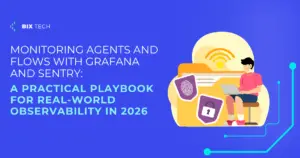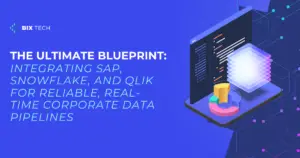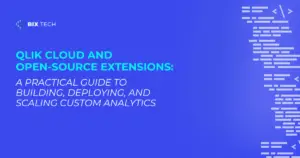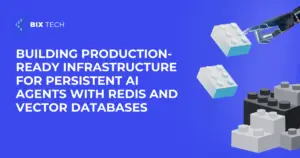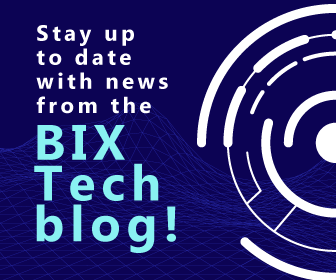Named Entity Recognition (NER): Methods, Use Cases, and Key Challenges Explained

Sales Development Representative and excited about connecting people
In a world dominated by data, making sense of unstructured text is one of the biggest challenges — and opportunities — for modern organizations. Enter Named Entity Recognition (NER), a powerful Natural Language Processing (NLP) technique that’s quietly revolutionizing how businesses extract, analyze, and act on the information buried in documents, emails, social posts, and more. But what exactly is NER, how does it work, and why does it matter so much for data-driven decision-making?
In this comprehensive guide, we’ll break down the fundamentals of NER, explore its core methods, highlight real-world applications, and tackle the obstacles that come with implementing these solutions. Whether you’re a tech leader, data scientist, or simply curious about AI’s role in text analysis, this post will help you understand why NER is quickly becoming a must-have in the modern analytics toolkit.
What Is Named Entity Recognition (NER)?
At its core, Named Entity Recognition (NER) is a sub-task of information extraction within NLP. Its main job? To scan unstructured text and identify specific “named entities” — words or phrases that refer to people, organizations, locations, dates, monetary values, and more. In other words, NER turns a sea of words into structured, actionable data.
Example:
Consider the sentence: “Steve Jobs co-founded Apple in 1976.”
A well-designed NER system would extract:
- “Steve Jobs” as a Person
- “Apple” as an Organization
- “1976” as a Date
By automatically tagging such entities, NER enables everything from smarter search engines to advanced analytics and knowledge graphs.
How Named Entity Recognition Works
NER’s magic lies in its ability to bridge the gap between unstructured text and structured information. Here’s a simplified look at the typical NER pipeline:
1. Tokenization
The text is split into smaller units (tokens) — usually words or phrases. For instance, the sentence above becomes tokens like “Steve”, “Jobs”, “co-founded”, and “Apple”.
2. Entity Identification
The system scans for patterns that might indicate an entity, such as capitalization for names (“Steve Jobs”) or recognizable formats for dates or currencies.
3. Entity Classification
Identified entities are assigned to categories like Person, Organization, Location, etc. This step is often powered by machine learning models trained on vast labeled datasets.
4. Contextual Analysis
Since words can have multiple meanings, NER systems use the surrounding text to improve accuracy. For example, “Apple” could mean a fruit or a company — context is everything.
5. Post-Processing
The results are refined, ambiguities resolved, and sometimes knowledge bases are consulted for improved accuracy (such as linking “Steve Jobs” to his Wikipedia entry).
Why is this important? Unstructured text is everywhere — emails, legal documents, research papers, customer feedback — and NER transforms this raw data into structured insights that drive better business decisions.
Methods of Named Entity Recognition
NER has evolved dramatically, with various approaches tailored to different needs and data landscapes. Let’s take a closer look at the main methods:
Rule-Based Methods
Relying on hand-crafted rules (like regular expressions and dictionaries), these systems are effective in narrowly defined domains with consistent terminology (e.g., extracting drug names in medical texts). However, they can struggle with new or ambiguous data and aren’t easily scalable.
Statistical Methods
Models like Hidden Markov Models (HMM) and Conditional Random Fields (CRF) use probabilities derived from labeled datasets to identify and classify entities. They offer more flexibility than rules but require significant annotated data and may still miss subtle patterns in language.
Machine Learning Methods
Algorithms such as decision trees or support vector machines learn to spot entities by analyzing features in large labeled datasets. They can handle more complex patterns but are data-hungry and computationally intensive.
Deep Learning Methods
Neural networks, especially Recurrent Neural Networks (RNNs) and transformers (like BERT), have taken NER to new heights. By modeling long-range dependencies and context, these systems achieve state-of-the-art accuracy for large-scale, real-world tasks. The trade-off? They demand substantial computing power and vast labeled datasets.
Hybrid Methods
Recognizing that no single approach is perfect, hybrid systems combine rules, statistical models, and machine learning to get the best of all worlds. They deliver impressive results in complex environments but can be challenging to develop and maintain.
Want to dive deeper into how AI models process and classify language? Check out our guide on The Power of Language Models: Guide and Business Applications.
Real-World Applications of NER
NER isn’t just a research topic — it’s at the heart of many AI-powered solutions driving value across industries:
1. News Aggregation & Media
NER automatically categorizes news stories by the people, organizations, and places mentioned, making it easier for readers to track topics of interest (e.g., all news about “Elon Musk” or “OpenAI”).
2. Customer Support & CRM
By analyzing customer emails, chat logs, or support tickets, NER helps companies identify key products, issues, or locations referenced by customers — leading to faster, smarter responses and improved satisfaction. For a look at how AI enhances customer experiences, see AI-Enhanced Customer Experiences.
3. Scientific & Medical Research
Researchers use NER to sift through thousands of publications, extracting drug names, gene identifiers, or disease mentions — automating what would otherwise be a tedious manual process.
4. Legal Document Analysis
Law firms and compliance teams deploy NER to surface names, dates, locations, and other critical entities from lengthy contracts or court filings, dramatically speeding up due diligence and case preparation.
5. Financial Services
NER helps banks and fintechs extract key entities from transaction descriptions, regulatory documents, or market news, supporting compliance, risk assessment, and competitive intelligence.
Pro Tip: NER can also power advanced analytics like Predictive Analytics, enabling businesses to forecast trends based on entity mentions over time.
Key Challenges in Named Entity Recognition
While NER has come a long way, it’s not without its obstacles. Here are some of the most common challenges:
1. Ambiguity & Context Dependency
Words often have multiple meanings. “Amazon” could be a river, a company, or even a rainforest. Accurate recognition requires understanding the surrounding context — a persistent challenge for even advanced models.
2. Language & Domain Variation
Slang, regional dialects, and domain-specific jargon can trip up NER systems. What’s a common term in finance might be meaningless in healthcare, and vice versa.
3. Data Sparsity
Machine learning and deep learning approaches require large, high-quality labeled datasets. For less common languages or specialized domains, such data can be expensive or impossible to obtain.
4. Generalization Across Domains
A model trained on news articles might perform poorly when applied to scientific papers or social media posts. Ensuring adaptability and robustness is an ongoing research frontier.
5. Evolving Language
Language is dynamic. New entities (startups, slang, hashtags) emerge all the time, requiring NER systems to be continuously updated and retrained.
The Future of NER: What’s Next?
NER is rapidly advancing, fueled by innovations in deep learning and the increasing availability of labeled data. As organizations strive to become truly data-driven, NER will be a crucial enabler, making vast text archives — from emails to legal records — accessible for analysis and automation.
Looking ahead, expect to see:
- Greater multilingual support: More robust models for low-resource languages
- Domain adaptation: Transfer learning and fine-tuning for better cross-domain performance
- Integration with knowledge graphs: Enriching enterprise data and powering smarter AI assistants
Conclusion
Named Entity Recognition stands at the intersection of linguistics, AI, and business intelligence. By converting unstructured text into structured data, NER unlocks actionable insights, streamlines workflows, and powers the next generation of intelligent applications.
Ready to learn more about how advanced analytics and AI can transform your business? Explore our insights on Data Science and Business Revolution and discover how to stay ahead in the data-driven age.
Curious about implementing NER or other NLP technologies in your organization? Leave a comment below or get in touch — we’re always happy to chat about the future of intelligent data analysis.



